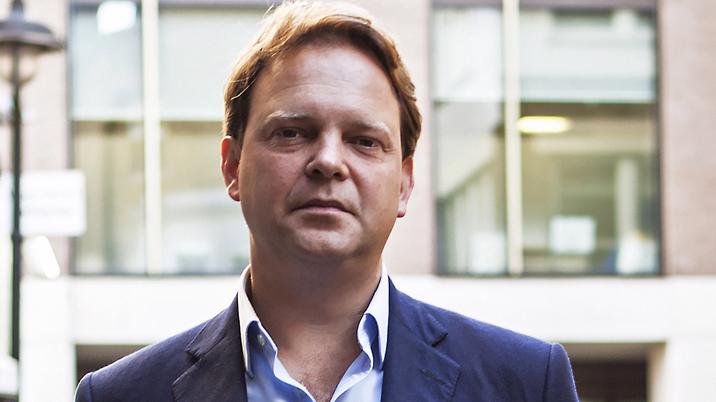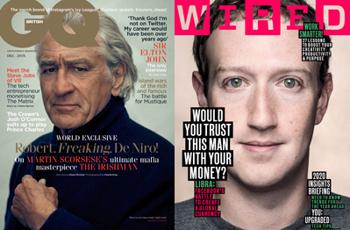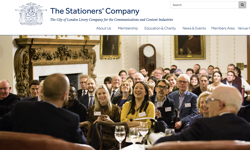
Wired – the self-declared Rolling Stone of technology founded in the US in 1993, bought by Condé Nast in 1998 and launched in the UK in 2009 – and GQ, the men’s fashion magazine launched back in 1931, owned by Condé Nast since 1983 and launched in the UK five years later, have more in common than shared parentage. Since the two brands were more closely aligned in the UK under Publishing Director Nick Sargent in January 2018, synergies have become sharper, 360-degree commercial opportunities have been more clearly defined and British GQ is now following Wired’s lead into B2B consultancy.
People assume Condé Nast is all about B2C, but actually it’s about B2B too.
Wired Consulting
“Consulting is a key pillar for us,” says Sargent, who joined Condé Nast as commercial director, Wired Publishing (latterly, group commercial director, Wired Media Group) in January 2015 from The Economist, where he spent eight years following stints at Time Out and Guardian News & Media. Launched in 2012 and now run by recently appointed Managing Director Catherine Crump, Wired Consulting is going from strength to strength.
Now, having integrated the two brands’ commercial teams into a single, 40-strong team, Sargent is overseeing a plan to apply lessons learned from consultancy at Wired to formalise and strengthen a GQ consulting proposition under a new senior executive – and updated branding – to be confirmed this spring.
“The way we describe it is that we are in the business of anticipating change, so we help companies navigate changes in their sector. We worked with Ford to help them move perceptions of their company from being a motoring manufacturer to being a mobility business last year,” he explains.
Previously, the approach has been to sell business clients access to Wired’s collective brains – its contributors and its experts, who its editors can call on to create content to put into bespoke white papers, around which tailored events such as company conferences, seminars and workshops can be built. After, the client keeps the content generated and the consulting business can also work with them to advise on how best to use it for marketing purposes.
For the first few years of Wired Consulting, emphasis was on harnessing Wired’s technology expertise to create bespoke insights and related technology futures content for clients including Accenture, Shell and Ernst & Young. Moving forward, the aim is to formally broaden this service proposition by utilising GQ’s editors, writers and other experts as the operation extends its focus to more directly address the needs of business in retail and other GQ areas of lifestyle interest, such as style and fashion, politics, trends and culture.
“Retail is obviously a huge part of GQ and on the consulting side, we would like Dylan, our editor, to be speaking on panels about the future of retail and the future of the high street. People assume Condé Nast is all about B2C, but actually it’s about B2B too, as there’s so much expertise in the building amongst people who have been working in these industries for so long,” Sargent continues.
In this sense, consultancy is both a natural and a distinctive extension that – apparently – no-one else can do in quite the same way.
“It’s about insights. And for me, that’s all about our IP. We produce content no-one else can, with teams more skilled than most and editors who are longstanding – Dylan has been at the helm of GQ 20+ years,” he adds. “And that’s invaluable when you are in a marketplace in which you are competing (for digital revenues) against the Facebooks and the Googles.”
By further strengthening its own content, conversations with digital platforms are no longer just about reach and numbers and the two magazines now have content partnerships with Twitter and LinkedIn.
“You’ve got to have something to give people. That’s what platforms don’t have and what we do so well. And this is why for me, a big part of training for my team is to ensure everyone here really appreciates the value of what we produce and that not everyone in this industry can produce editorial content of our quality and offer access to the likes of Ralph Lauren or Dolce + Gabbana,” Sargent observes.
“Facebook ads are all very well, but say you buy some to advertise a £6,000 Cartier watch – will doing that help you actually sell any? What will your ads be next to? Brands care about environment and at Condé Nast, we have a track record in that, whether it’s Vogue, GQ, Wired or Condé Nast Traveller.”

In the round
To understand the importance of consulting to Wired and GQ, it’s important to understand the 360-degree approach now in place for both brands and, within this, the respective role of print.
British GQ, which publishes monthly, had an ABC of 103,087 in H1 2019 – a 6.3% year-on-year decrease – with 60% actively purchased (down from 87% in 2009). But while newsstand sales remained difficult – as they are across the men’s market – web traffic rose year-on-year, by 24%. Meanwhile, though GQ’s print revenue still dominates, digital revenue was up 18%, video revenue was up 26% and events revenue was up 126% in 2019 on 2018.
Wired UK, which publishes bi-monthly, had an ABC of 50,028 over the same period – virtually unchanged on the previous period. Digital traffic to wired.co.uk, however, has risen 64% since 2017. Revenues for Wired are now split pretty much evenly between print, digital and events. Video, meanwhile, is earmarked as a major growth opportunity and the hope is that Future Cities, a series of one-hour Wired UK-produced documentaries served on YouTube in 15-minute segments which are now approaching one million views with little marketing, will be pitched to Netflix at some point over the next year.
Non-print activities are therefore growing. Yet, Sargent insists, print remains an important part of the mix – borrowing from Anna Wintour to describe it as “the runway” to each brand. It’s why major figures still compete to being in GQ’s pages and on its covers and why major brands want their names featured near those major figures, he explains. It’s also a significant and on-going draw for the best writers, photographers and expert commentators.
Aside from extending the consultancy proposition, Sargent has also been working hard to apply other commercial lessons learned by Wired to GQ.
Events, for example, have long been invitation-only for British GQ – notably, the prestigious GQ Men of the Year Awards, now in its twenty-third year. Recently, however, a new ticketed emphasis was introduced with GQ Heroes – an event launched in a pop-up space with Taschen at Flannels London by British GQ in May 2019 to celebrate and unite heroic figures shaping British culture and society.
Brands care about environment and at Condé Nast, we have a track record in that.
Refining the commercial offering
“The main thing has been to get everyone in the commercial team trained up across all the platforms across both brands, because we now have four magazines, three to four websites, nine to ten scheduled events across both plus a lot more smaller ones, and consulting. This is a pretty broad spectrum of opportunities to offer clients, and our skills lie in identifying how best to package some or more for each client, as and when,” he says.
The approach is to identify a “tent pole” component – an event, for example – around which a host of activity and bespoke content can be built on a client by client basis.
“Ultimately, we are creating marketing assets a client can use elsewhere, co-branded, for a period of months – not just at the point of any particular, single event. We advise on how best to speak to our audience on each different platform, and everything we do is bespoke – per client, and per channel as you don’t just put out one piece of content or message in all directions and that’s it. Nothing is off the shelf here,” Sargent insists.
“Getting this right is down to having great project managers and great designers as well as great content, and the ideal is that a project manager stays on an account for at least six months, speaking with that client three or more times a week which, in turn, means at the end of the six months, we are well positioned to carry on working with that client into the next year.”
He adds: “We will advise on content a client can make about their business and what they do, not featuring a sales or marketing person but those involved in untold stories we know our audience will be interested in – for example, the person at Hermès responsible for reducing their carbon footprint or designing their next new store in Shanghai.”
‘360’ means becoming hand in glove – and so, an intimate and indispensable partner, Sargent points out. But as important over the months ahead will be an emphasis on what he calls “a little more nuance” – in short, the why of why brands buy one media space or medium over another.
“All of us face similar macro-economic challenges. We must mitigate these by being innovative and for us, with the deep contacts we have in our markets, and our ability to hear about things coming before they appear over the horizon, we will work to help people try to solve their business problems,” he says.
“But we must also deal with the twin challenges of getting resonance with agencies who, perhaps, buy programmatic and the fact that in the era we now exist, so much is dictated by data, raw numbers and cost per clicks. That’s why, as an industry, we must talk up what we do. A high-quality environment, great editorial and production values, and the loyalty of readers all enable us to compete when we can’t fight the digital giants on numbers and reach alone. Because it shouldn’t be about them or us, but them as well as us.”
Ultimately, we are creating marketing assets a client can use elsewhere, co-branded.
This article was first published in InPublishing magazine. If you would like to be added to the free mailing list, please register here.










